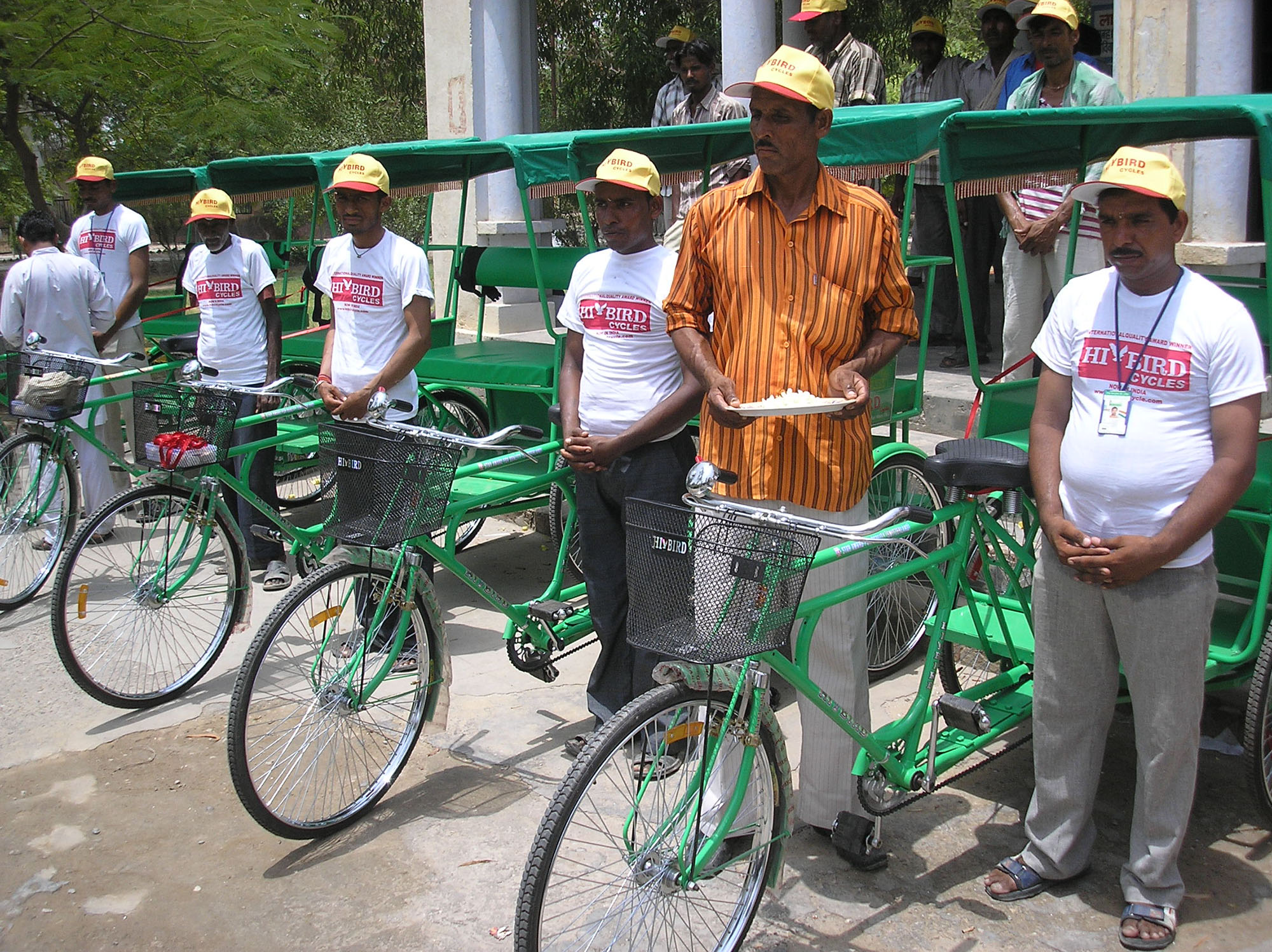31.3Bicycle Systems
Riding a race bike is an art—a thing that you do because you feel something insideValentino Rossi, athlete, 1979–
This section provides an overview of bike-share (public bikes) and pedicab systems. These systems allow people to derive the benefits of cycling without bike ownership or maintenance.
31.3.1Bike-Share
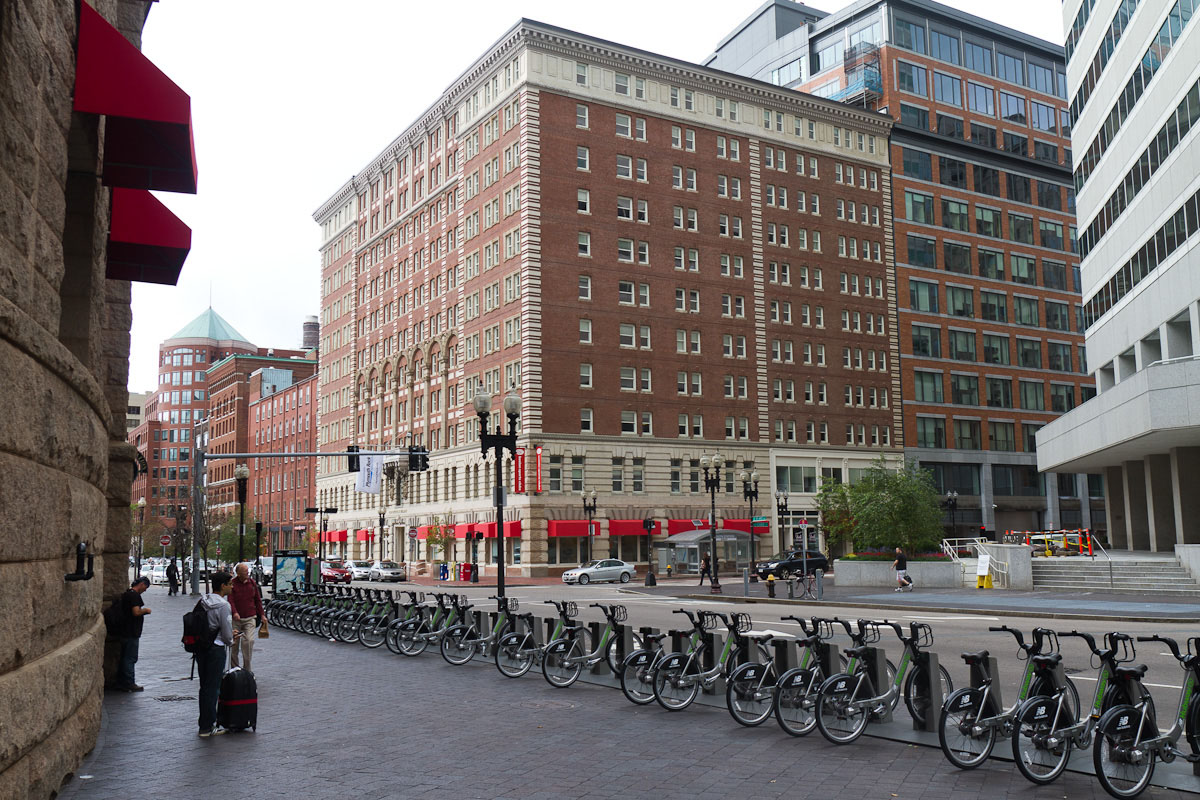
Bike-share systems consist of a fleet of bicycles available on demand at a network of stations throughout a designated service area. Users pick up and drop off bicycles at their convenience. When integrated into public transport, bike-share extends the reach of public transport and provides a “last-mile” solution to and from destinations that are beyond walking distance of the station. ITDP’s Bike-Share Planning Guide, released in 2013, provides detailed guidance on how to plan and implement a successful bike-share system.
Cities throughout the world are investing in bike-share as a relatively inexpensive and quickly implemented urban transportation option. Modern bike-share systems are characterized by providing subscription-based service, to ensure user identification and accountability against theft and vandalism. Subscribers unlock bicycles using smart cards or RFID keys, while walk-up users sign up with a credit card at a station or kiosk. To encourage short trips, users are charged a flat rate for thirty to sixty minutes of use, after which progressively higher fees are charged. Technology integration with bike-share systems often provides access to wayfinding information and station maps, including currently available bicycles and docks.
31.3.2System Type
There are two basic bike-share system models: fixed and flexible programs. Fixed programs include docking stations where users can check out a bicycle at a known, fixed location. Flexible programs rely on existing bicycle racks throughout the service area.
31.3.2.1Fixed Programs
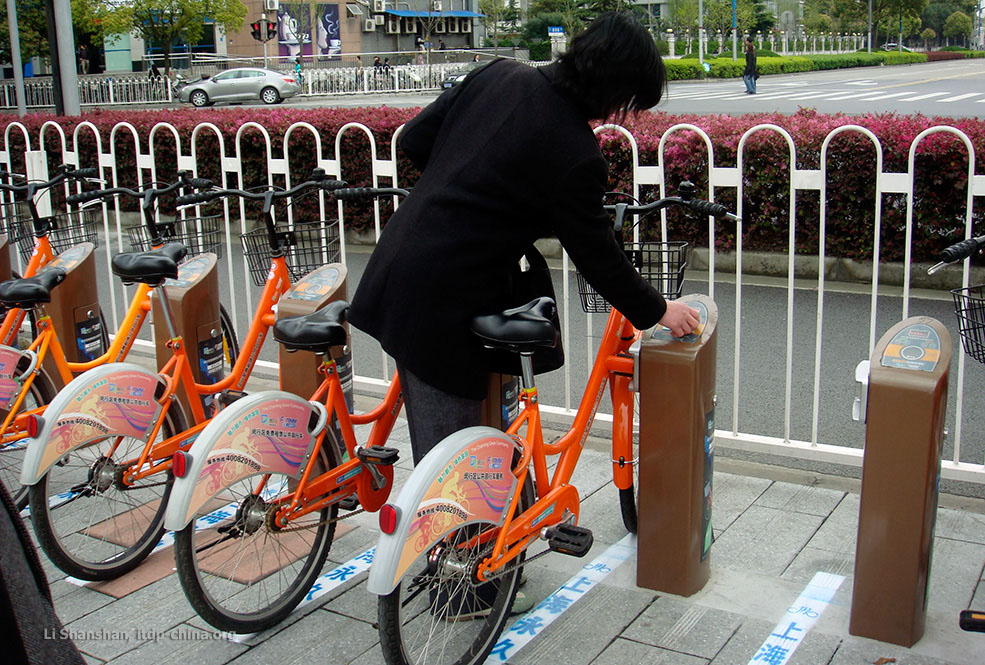
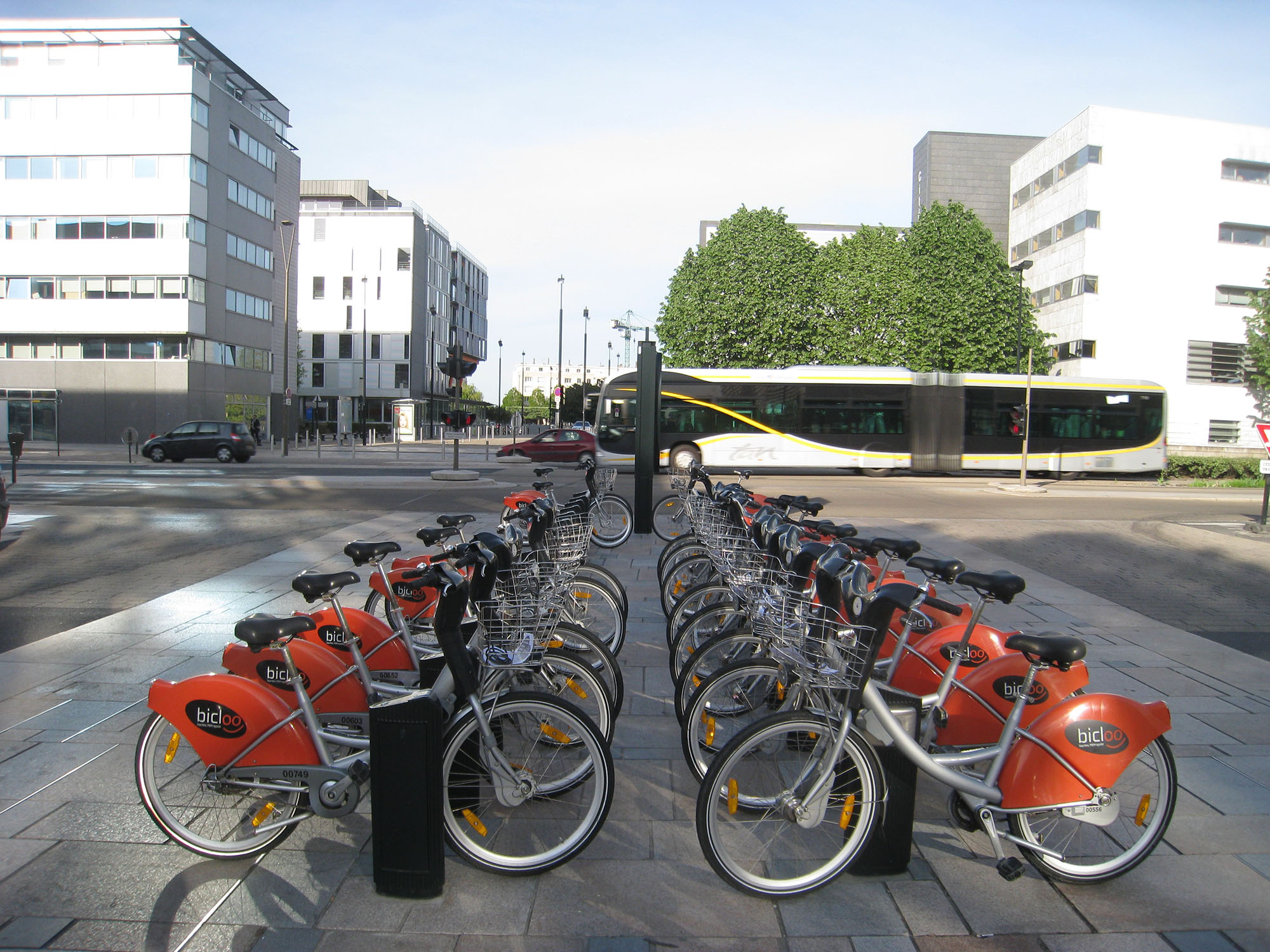
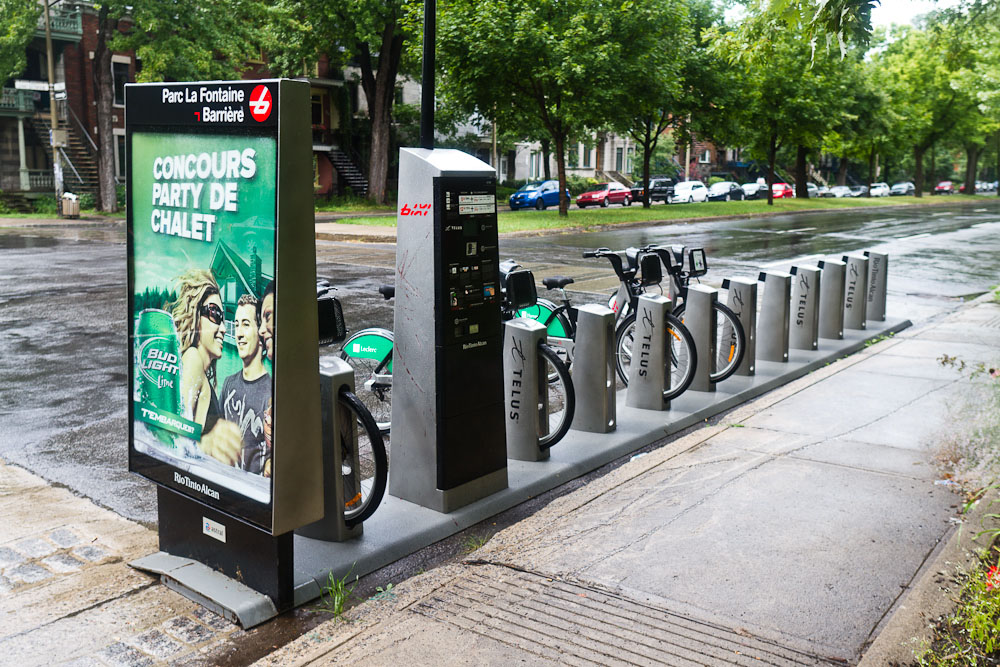
Stations may be fully automated, allowing users to unlock a bicycle with a RFID card or key, linking the bicycle to the user’s account and recording when the bicycle was taken and returned. A kiosk at the station transmits data between the dock and control center to:
- Report the number of bicycles at the station;
- Record users taking out bicycles and returning them;
- Provide information to users about their subscription account;
- Process credit cards for walk-up users;
- Provide the location and capacity of nearby stations.
Stationary docking stations can be permanent or modular. Permanent stations are installed into the ground, hardwired to utilities, and not movable. Modular stations are less expensive to install because they require little or no excavation. Modular stations can be adjusted more easily, adding or removing docks to accommodate user demand, events, and construction sites. The Bixi system in Montreal uses modular bike-share stations to allow the system to be removed during winter months, when demand is lower. Modular stations often rely on a combination of solar power and batteries, which increases the flexibility of station siting, as placement is not dependent on utility connections.
In some scenarios, station attendants are warranted. Large stations that have capacity or high turnover, and stations near tourist destinations that attract many casual and unfamiliar users, can warrant having attendants to assist with redistribution and customer service. At high-demand bike-share stations at BRT stations in Guangzhou, China, an overflow corral is managed by an attendant, who moves bicycles from docks to the corral, or replenishes the docks with the corralled bicycles.
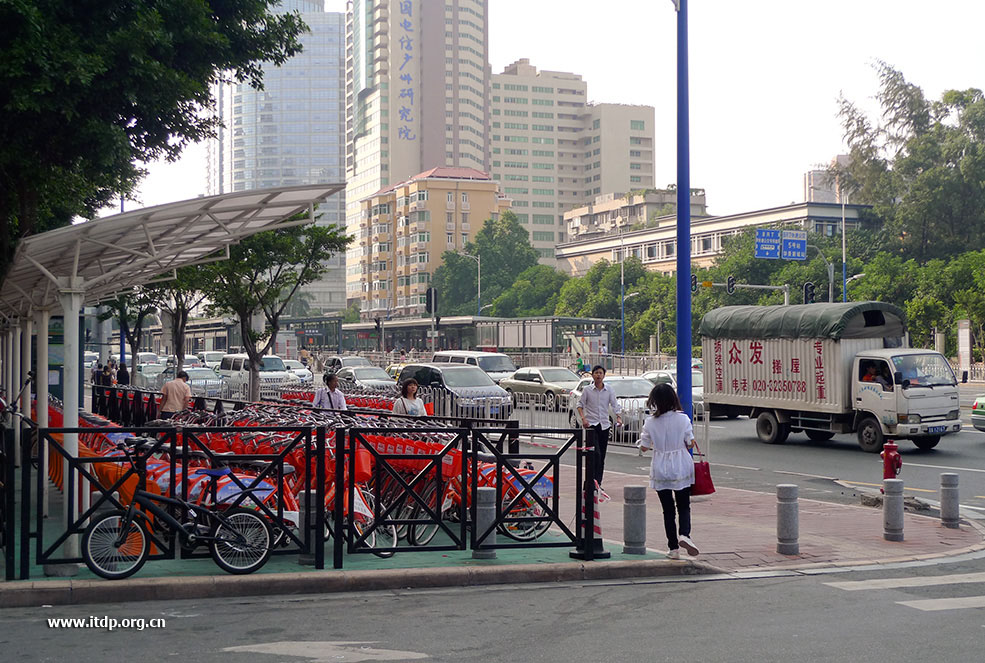
31.3.2.2Flexible Programs
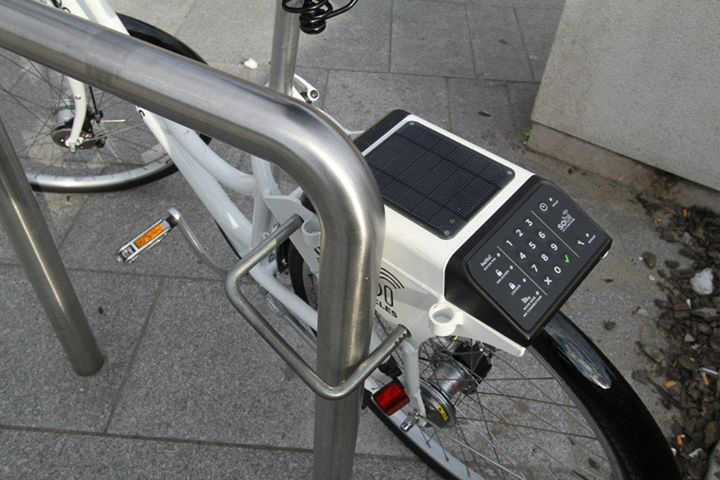
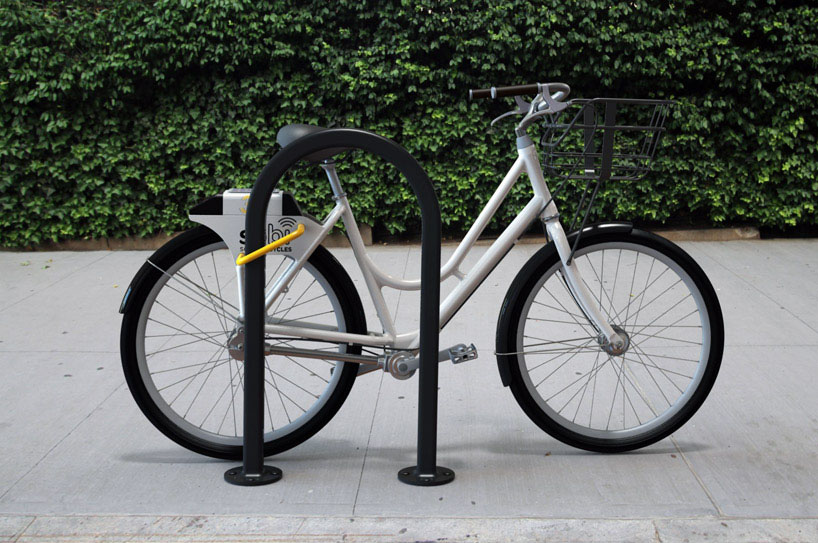
Flexible bike-share systems do not use stations, instead relying on a smart-lock system that utilizes GPS and wireless communications to communicate with the system control center. The security and checkout infrastructure is located on each bicycle, eliminating the need for kiosks or docking stations. The smart-lock handles check-in and check-out functions, transmits the usage and location of each bicycle as needed, and monitors maintenance needs and unauthorized use. Users typically preregister online, use a system map to locate a nearby bicycle, and check it out using a text message or mobile phone app. Without docking stations, the cost of a flexible bike-share system is greatly reduced. Compared to fixed systems, flexible systems can make bike-share travel between public transport and lower-demand destinations affordable and feasible, because docking stations are not required near every destination.
31.3.3Service Area and Phasing
The coverage, or service area, of a bike-share system is typically determined based on areas that will generate the most users or serve a need for improved mobility. Factors in the development of the service area typically include the locations where people live, work, shop, play, and access public transport. In addition, social and geographic equity concerns are often considered on the basis of serving areas with low household income, low mobility, and poor access to public transport, among other factors.
To maximize success, bike-share systems often launch in phases, starting in areas with the highest demand to accelerate success of the system. The decision to expand beyond the first phase (and subsequent phases) will depend on available funding and the success of the system. System success is typically measured in terms of visible achievements, such as high ridership, positive public response, neighborhood and corporate requests for service-area expansion, and ongoing financial performance. Essentially, the system will grow if the expansion can be sustained through existing funding or an additional influx of user fees, private sponsorship, grants, and/or public funding.
Rollout should occur in manageable stages that match funding and organizational capacity. Later phases may introduce service to communities that are discontinuous from earlier phases, but will generate their own demand and provide a connection to public transport for longer trips. The Guangzhou, China, bike-share system opened in June 2010 with 18 stations and 1,000 bicycles along the Zhongshan Avenue BRT corridor. Over three phases, the system grew to include 15,000 bicycles around BRT stations and connect nearby residential and commercial areas.
31.3.3.1Service Levels
The operator of a bike-share system should adhere to service levels that ensure an efficient and quality experience for the user, including:
- Maximum time periods the system or any part of it can be out of operation;
- Constant availability of bicycles and open docks to return bicycles to stations;
- Cleaning and maintenance schedule of the various aspects of the system;
- Longest time period faults are accepted and repairs can take.
Service levels can be enforced by both monetary penalties and rewards, with monitoring of service levels through the IT system. Both the operator and the government-oversight body should have access to the information database. If properly designed, this access by both parties allows for the service-level standards to become shared knowledge, so there are no discrepancies between the two organizations about the payment.
31.3.3.2Station Density
The size of a bike-share system is a function of its service area and the desired spacing of stations. Successful bike-share systems rely on a high density of stations within the service area, to minimize the distances users must walk to pick up or drop off a bicycle near their final destination. The Vélib system in Paris places approximately ten stations per square kilometer, or approximately one station every 300 meters. On average, station spacing in European and North American bike-share systems is typically between 300 and 400 meters, with a station density of approximately six to ten stations per square kilometer. This range provides access to a bike within a short walk of anywhere in the service area, and provides a nearby alternative to return a bike if the destination station is full.
31.3.3.3Station Size
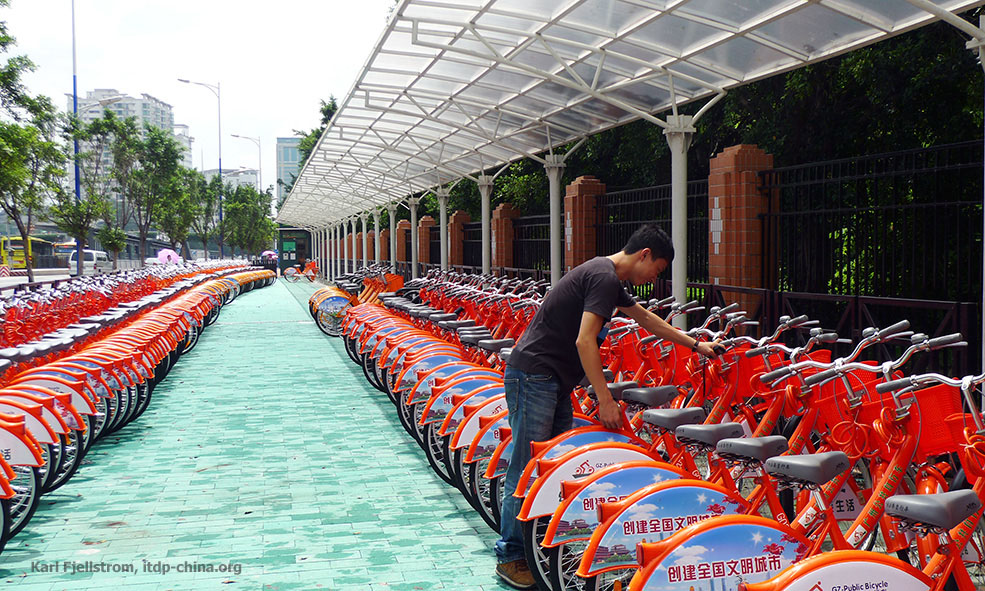
Station size is a function of demand. It is important that there be sufficient empty docks for riders to return bikes. Bike-share systems in Europe and North America typically use a ratio of 1.5 to 2 docks per bicycle to allow high-demand areas to accommodate peak period travel patterns. In an optimized system, the bicycles are used six to nine times a day. Higher ratios of docks increase capital costs, while lower ratios of docks to bicycles generally result in higher rebalancing costs. Redistribution vehicles and associated personnel can help balance full destination stations by restocking empty stations with high checkouts. Redistribution is one of the greatest challenges in operating a bike-share system. Using electric vehicles to transport bicycles and offering free time and incentives to return the bicycles to low-demand stations are two ways that Vyste, in Paris, optimized its redistribution process to reduce costs and minimize environmental impacts.
31.3.3.4Station Placement
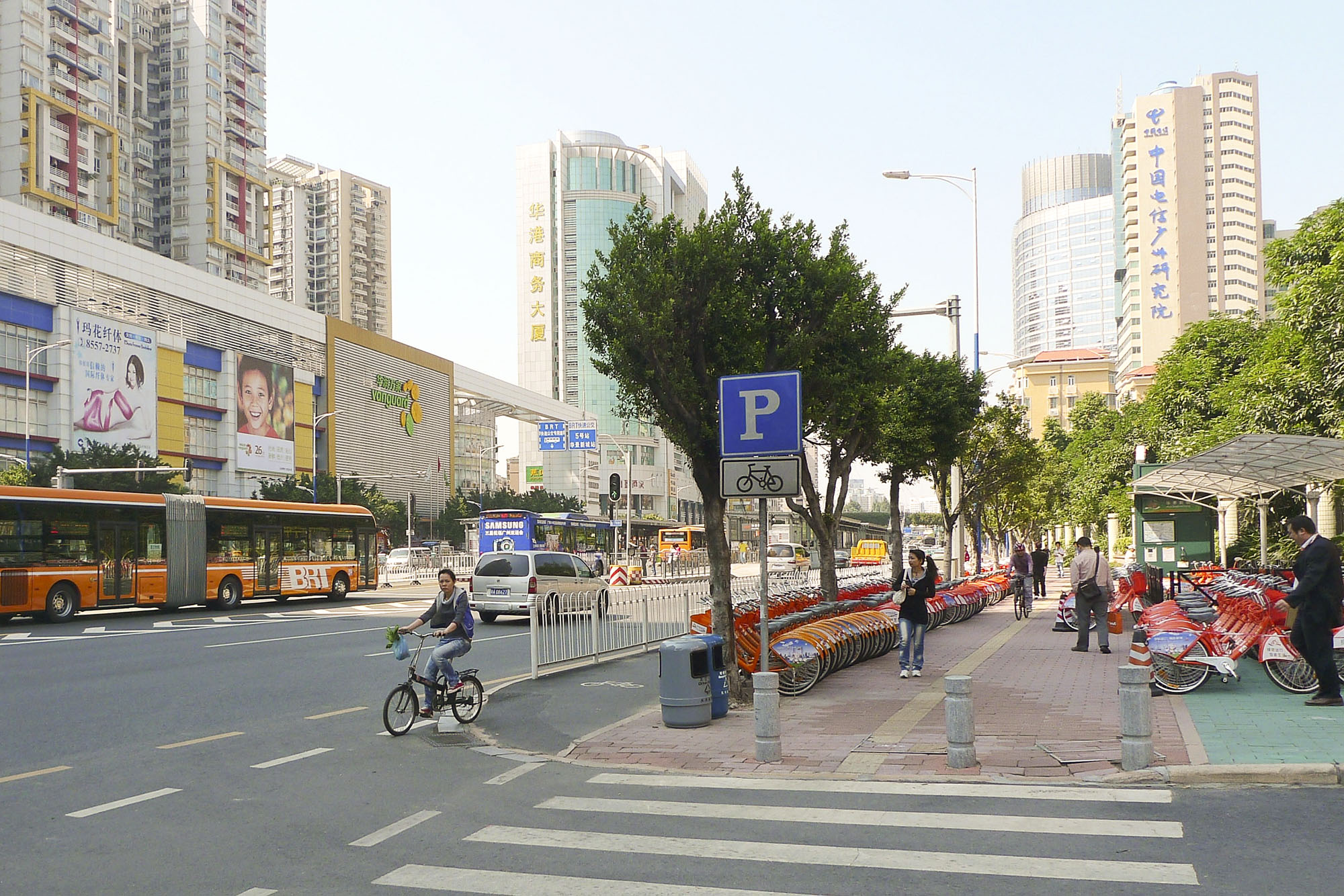
Based on the target density or distance a user must walk, stations are sited throughout the service area near bicycle infrastructure, public transport, and other key destinations. Bike-share stations should be placed in safe, convenient, and highly visible locations. If stations are intended to serve a public transport station or hub, there should be clear sight lines between the entrance of the public transport station and the bike-share station. Bike-share stations should ideally be located a short distance from BRT stations, without obstructing pedestrian and vehicle circulation, or forcing users to cross streets. This creates seamless transfers for the user from one mode of public transport to another. BRT station design can facilitate unique integration of bike-share stations. Unused space under pedestrian overpasses and on medians created by the station platforms can offer good areas for a bike-share station.
31.3.4Bicycle Design
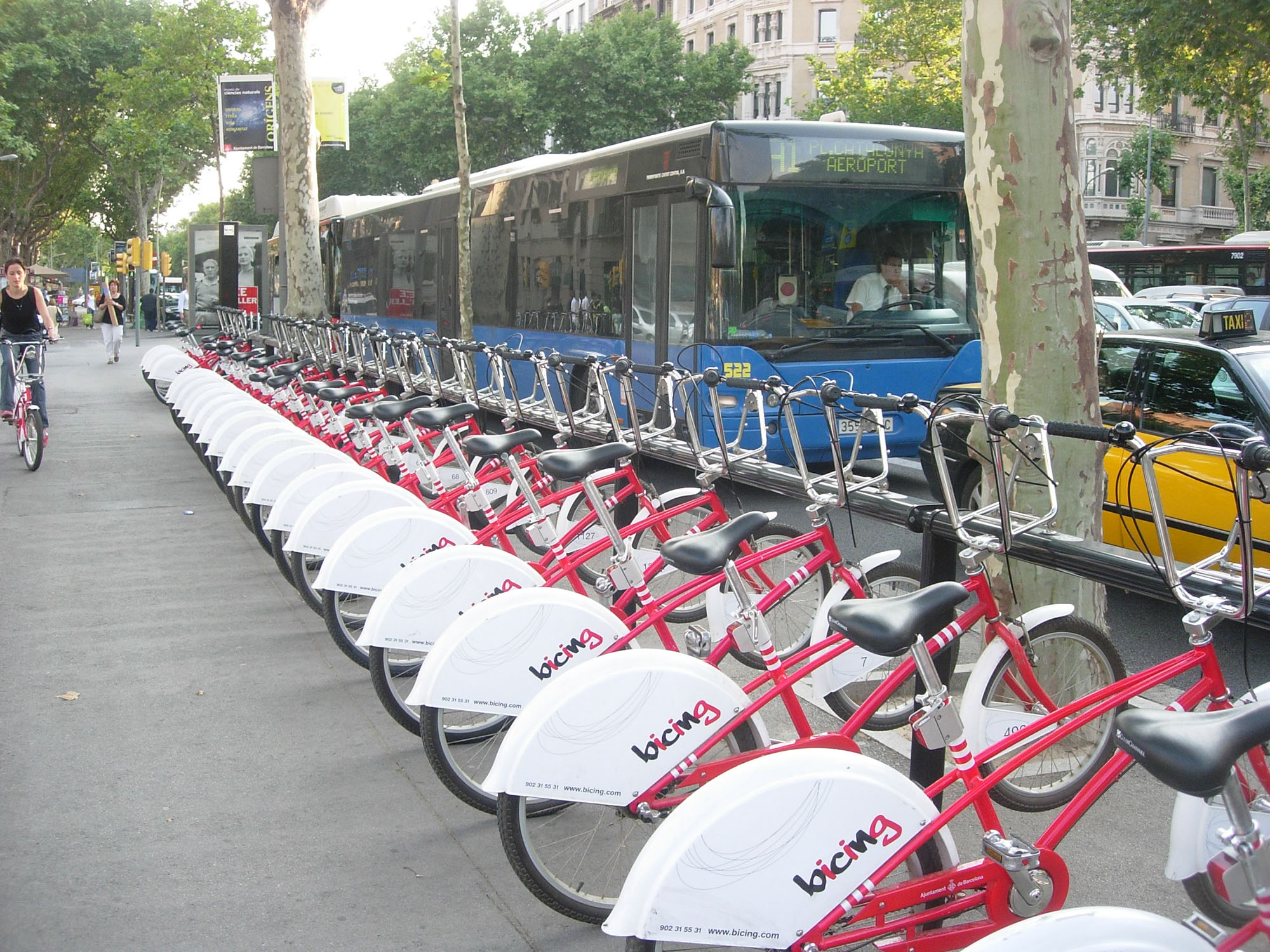
The physical design of the bicycle will depend on environmental and social norms of bicycling in the service area. Common attributes of successful bike-share systems include:
- Bicycle-frame design that accommodates users of varying sizes, such as a step-through design, which can be easily mounted. Adjustable seats that can be raised or lowered for different-sized users;
- Concealed drive trains and cables to minimize wear and tampering;
- A front basket or rack to carry a bag, rather than a rear rack, which can be overloaded or improperly used to carry passengers. Front and rear reflectors and lights, usually powered by a dynamo attached to the wheel, for visibility and compliance with local laws;
- Fenders to keep users dry in the rain. Bicycles that are identical and constructed of customized components to limit their appeal to theft and vandalism. The availability of those spares should be written into the procurement contracts with suppliers.
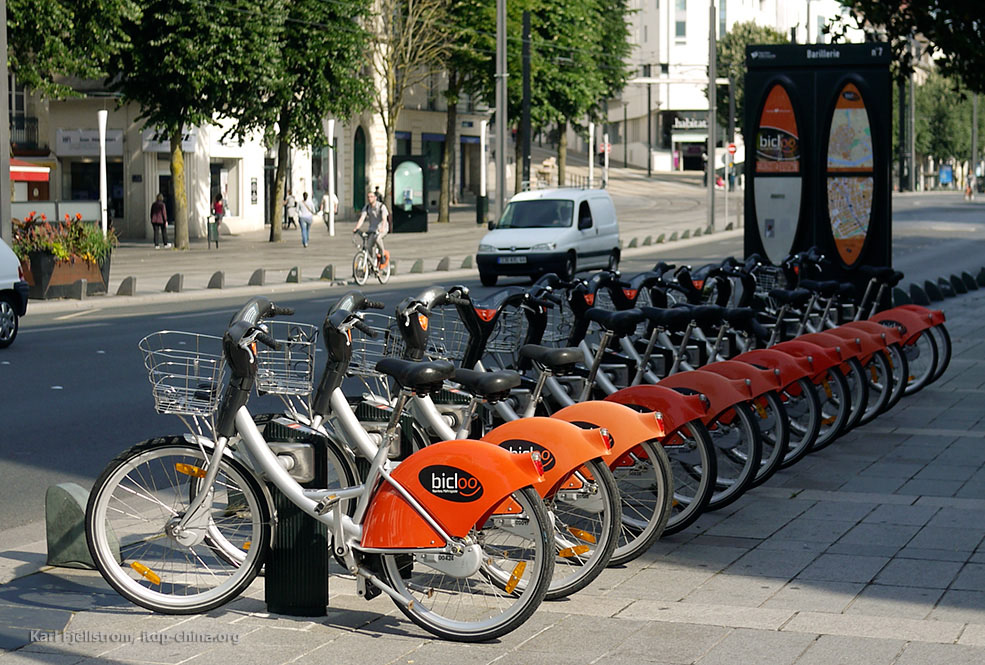
31.3.5Integration with BRT
31.3.5.1Information Integration
Signage that shows transfers from bike-share to BRT expands the reach of the public transport network. Real-time information, including timetables, station location, capacity, and operating hours can be available to the user through information management systems (website, on-screen display, and smartphone apps), signage, and user service personnel. Maps and routing applications, which help plot origin and destination trips using BRT, bike-share, and other modes of public transport, allow users to plan multimodal trips effectively.
31.3.5.2Payment Integration
Payment integration is an important means of creating an integrated public transport system. The same smart card that is used for BRT should also be used for the bike-share system and other forms of public transport. A single, integrated payment system that allows users to access BRT for longer distances and bike sharing for the “last mile” provides the experience of a unified public-transport system, even if payments are dispersed to various operators from a control center. The Navigo pass in Paris allows users access to Vélib bike-share, subway, and regional trains.
31.3.5.3Case Study: Guangzhou, China
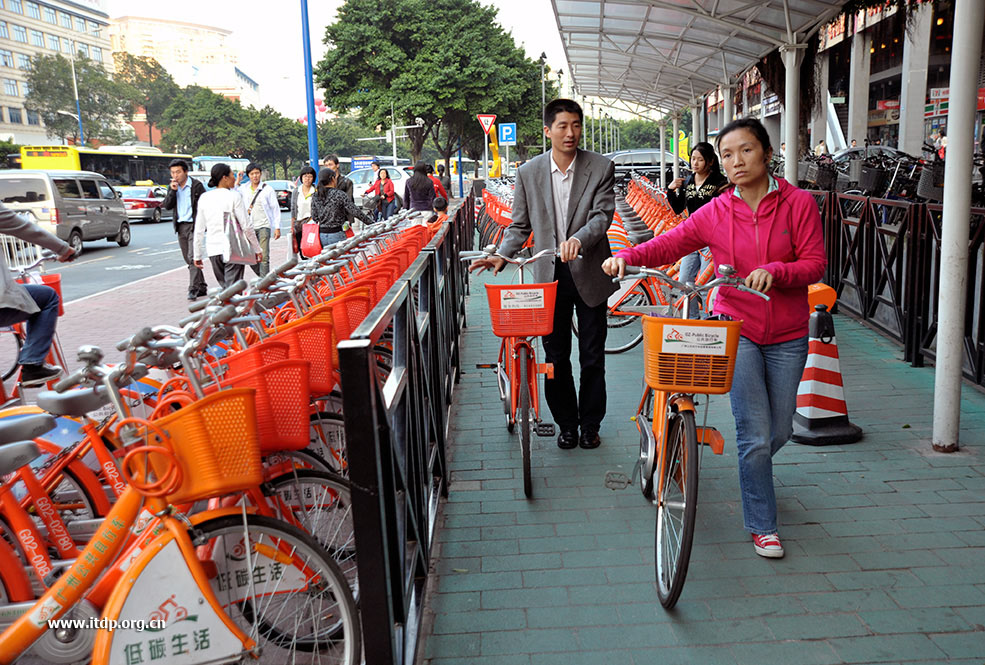
In Guangzhou the bike-share system was implemented and opened as part of the BRT project. Launched in June 2010, the Chinese city of Guangzhou inaugurated a bike-share system with 5,000 bicycles and 110 stations in the Tianhe District to complement the BRT, as well as the bicycle and pedestrian infrastructure along the corridor. A portion of the BRT trunk line acted as a backbone for the identified coverage area for Phase 1 of the system (Tianhe District), and the capital costs of the Phase 1 system were included in the overall BRT budget. The company operating the public bike system is owned by the same government agency that owns the company regulating the BRT operations, which is also in charge of regulating bus stops and bus terminals throughout Guangzhou. The Guangzhou Public Bicycle System has approximately 35,000 users and 21,000 rides per day, with one-third of users making trips by bike-share more than seven times per week.
31.3.5.4Pedicabs (Bicycle Taxis)
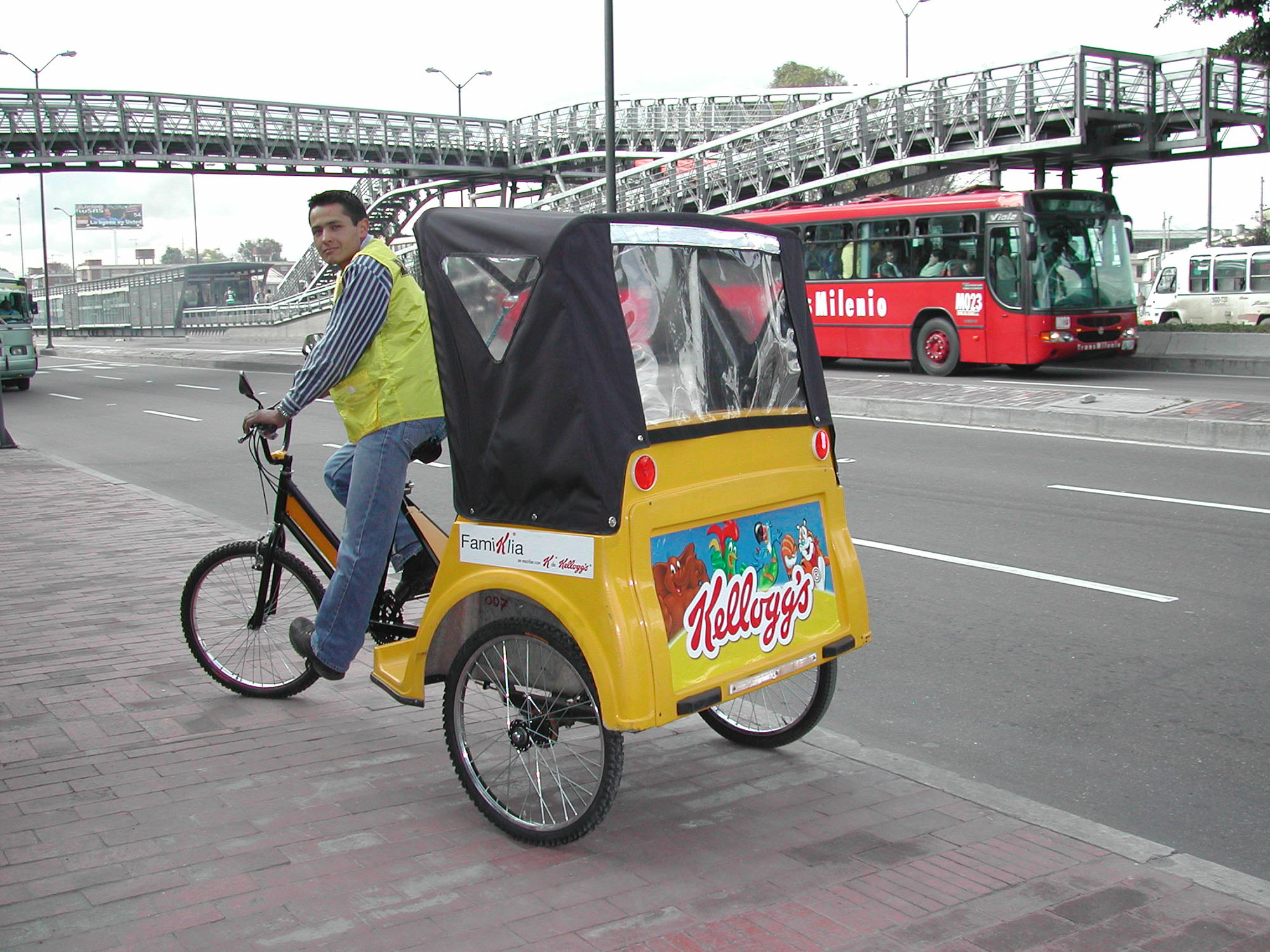
A pedicab (also known as a cycle rickshaw, becak, velotaxi, trisikad, sanlunche, or trishaw) provides low-cost, nonpolluting mobility while serving as an important source of employment in cities around the world. Pedicabs generally have three wheels and are manually powered. They are an ideal feeder service to BRT stations, especially for trips of 4 kilometers or less, and on streets that are too narrow for buses. They can be organized as a formal component of the BRT system, or encouraged informally through incentives. Finally, a system of pedicabs is an ideal tool to encourage entrepreneurship.
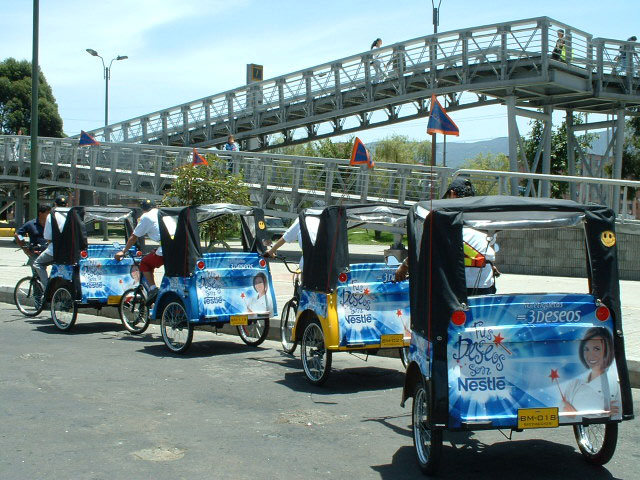
31.3.6Pedicab Design
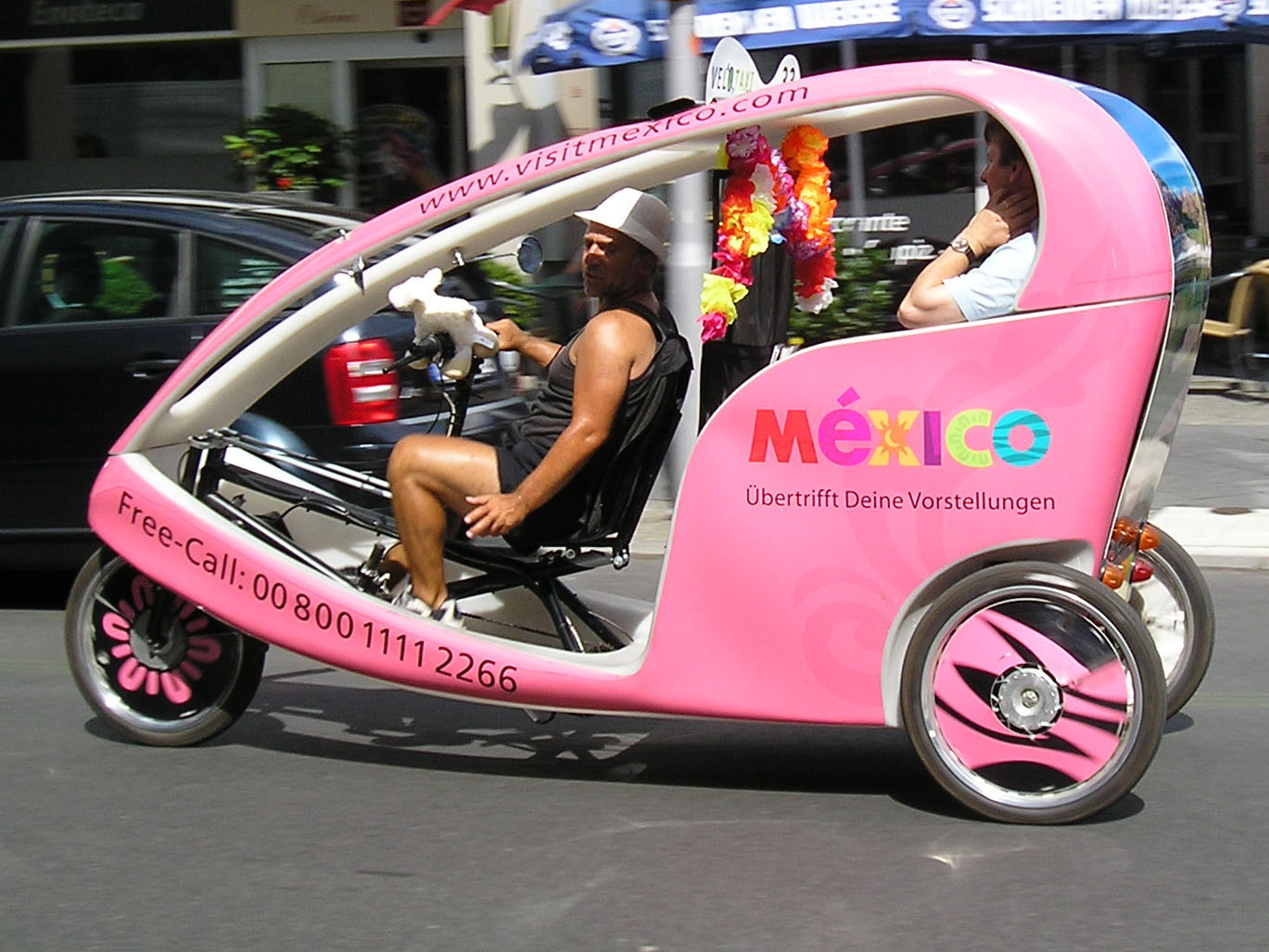
Similar to the regular bicycle, the design of pedicabs has advanced in recent years. Newer models are lighter, stronger, faster, and more comfortable than their earlier counterparts. In selecting a standard pedicab to complement a BRT system, every effort should be made to choose the most recent model and continue to update the models annually. This includes features such as customer shading systems, aerodynamic profiles, and advanced suspension, braking, and gearing systems.
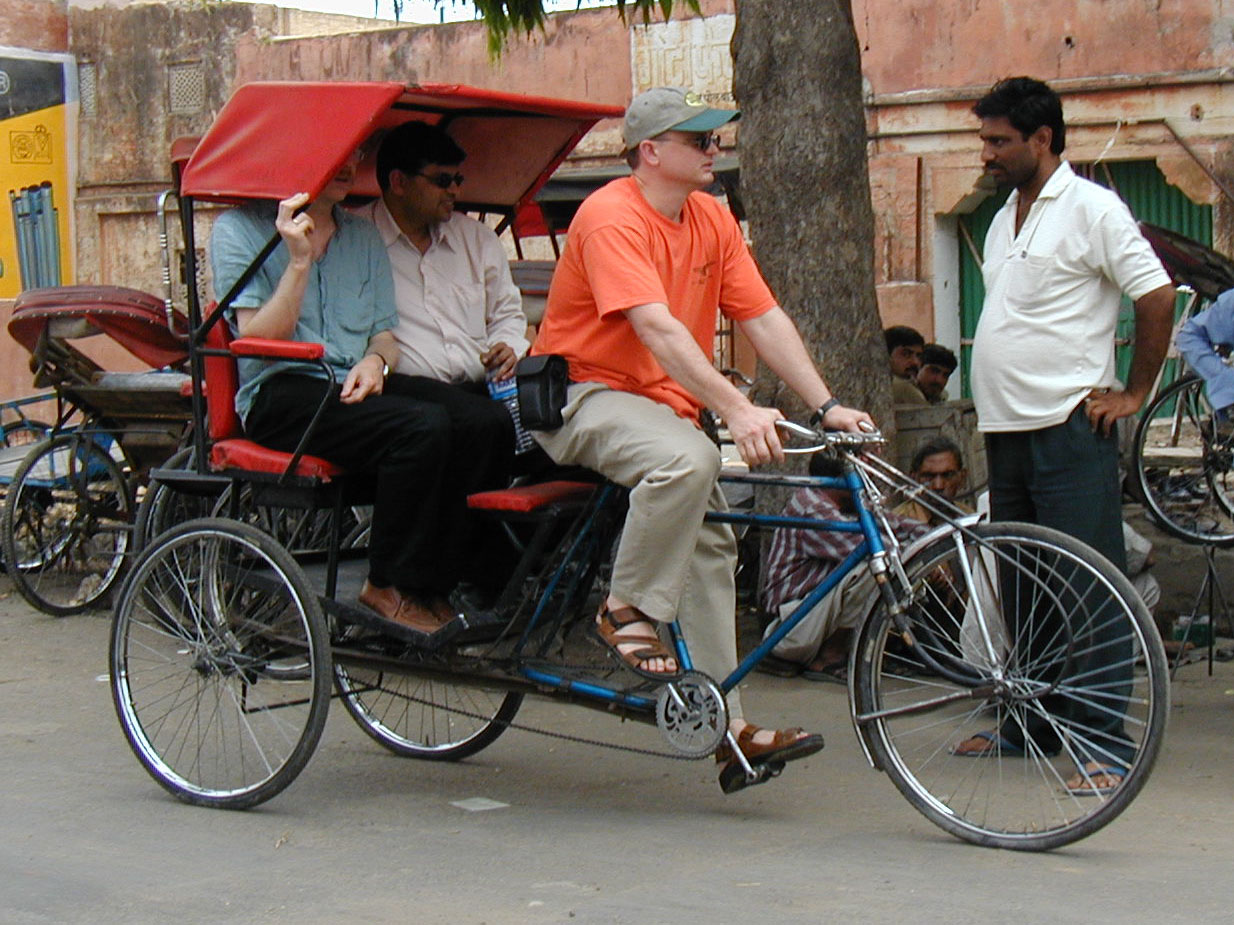
31.3.6.1Case Study: Agra, India
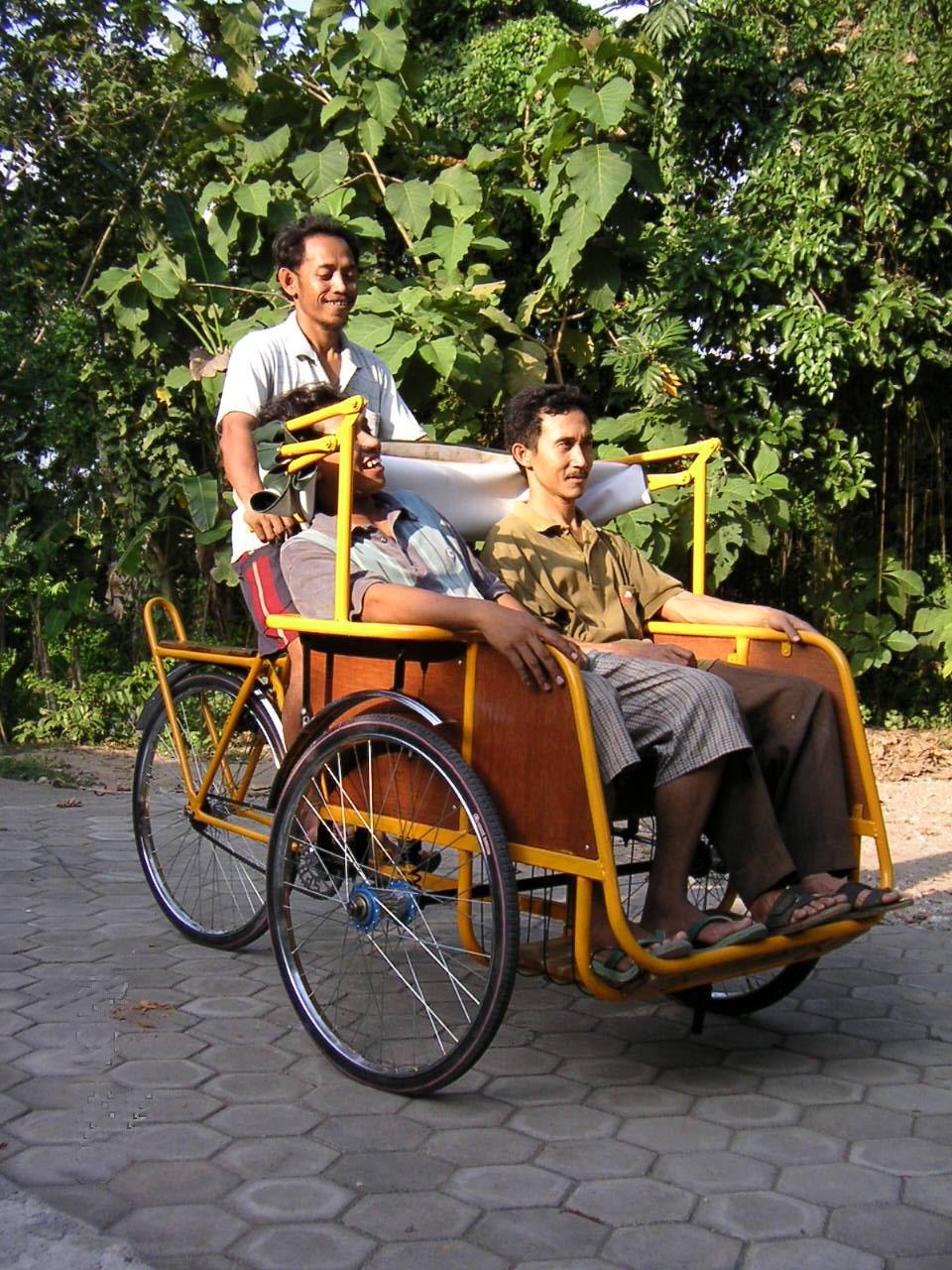
In the late 1990s, ITDP and several local partners initiated a program to develop a modernized cycle rickshaw for the Indian market. The initiative was launched in Agra, India, and quickly spread to other cities, including Delhi. The project produced a rickshaw that weighs 30 percent less than traditional rickshaws, at roughly the same cost (Figure 31.60). Drivers reported a 50 percent increase in earnings, because they could ply the modern rickshaw for a longer period of time and also due to superior comfort for customers. Today, over 300,000 modern pedicabs operate on the streets of Indian cities. In Indonesia, cities such as Yogyakarta are following the lead of the Indian cities and producing a modernized pedicab (Figure 31.63).
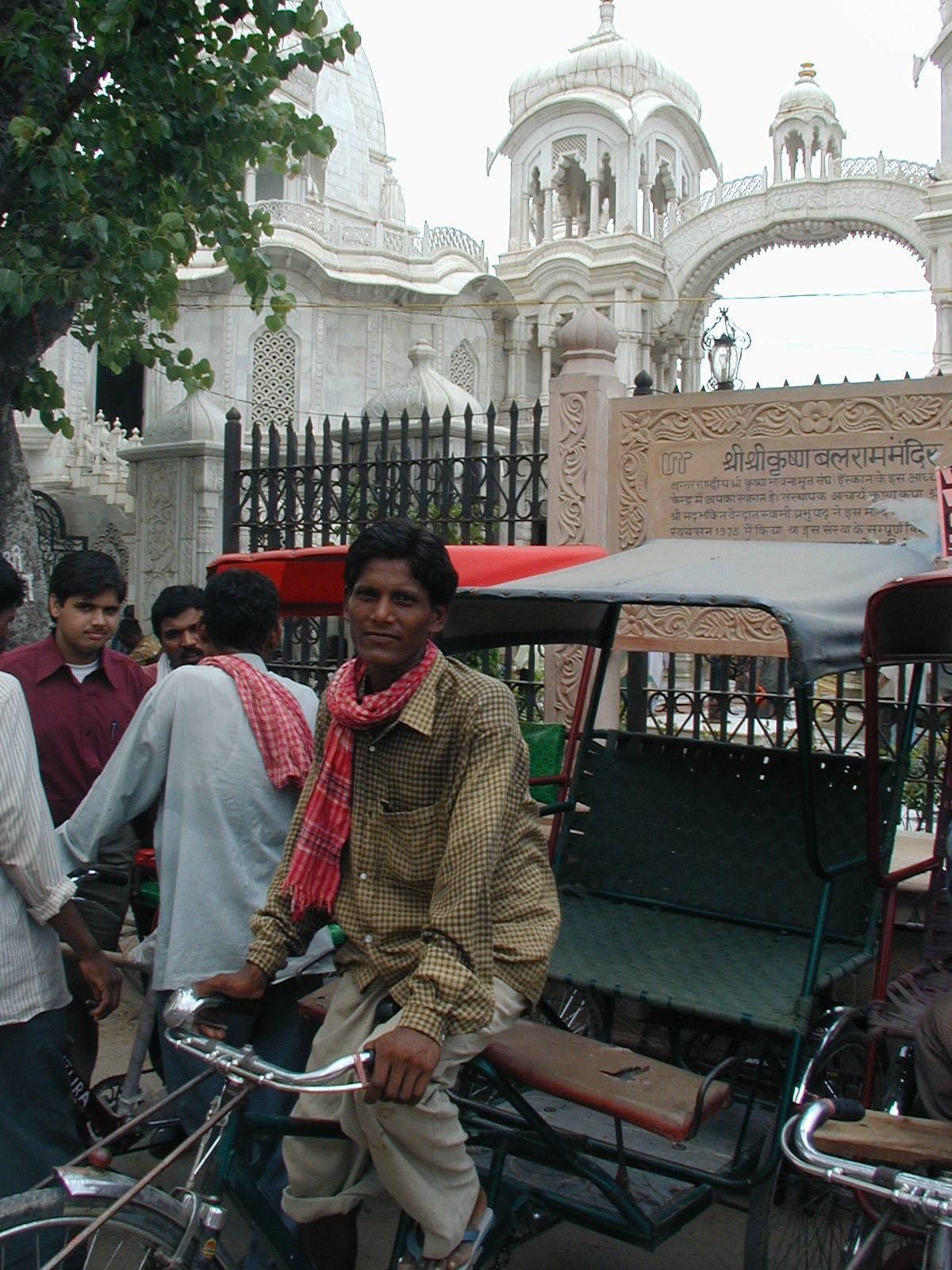
31.3.7Facilities
31.3.7.1Additional Width
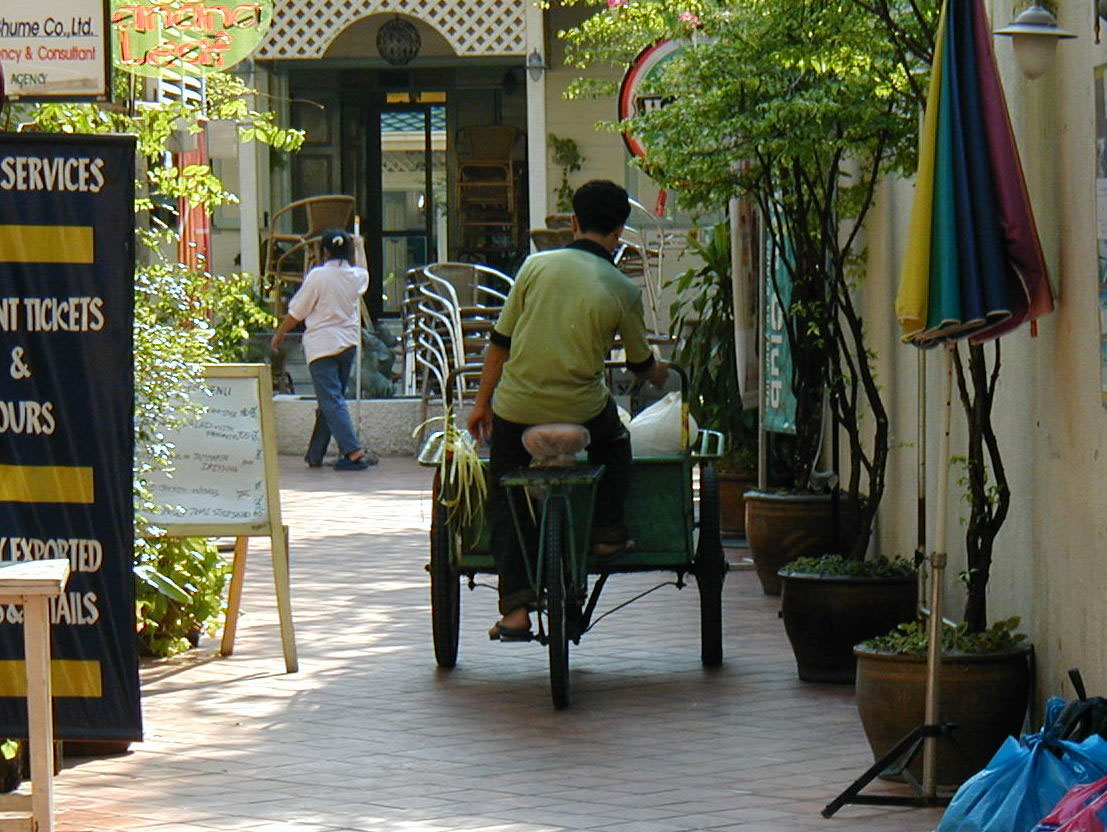
Because they are wider than a bicycle, there are special concerns for pedicabs in facility design. Ideally they should use the non-motorized roadway network, such as greenways, bike lanes, low-speed streets, or alleys. These facilities should be designed accordingly. A more spacious design also accommodates bike trailers, wagons, adult tricycles, and other nonstandard bikes. Note that there are varying vehicle widths, thus the dimensions below need to be verified for each country. Some general guidelines for pedicab facilities are:
- Pedicabs generally fit in a 1.5-meter-wide bike lane, but not narrower; 1.8 meters is preferred;
- Bicycles and pedicabs need to pass each other. In a striped lane this is accomplished by moving into the adjacent auto lane. A bike lane should be at least 2 meters wide, if not 2.5 meters;
- Bollards and other obstacles that allow a bicycle to pass through may restrict a pedicab. A 1.7-meter clearance generally does not restrict a pedicab;
- Ramps designed for bicycles need to be wider for pedicabs;
- Parking facilities need to be larger to accommodate pedicabs.
31.3.7.2Waiting Stands at BRT Stations
Whether formal or informal, waiting stands at BRT stations are integral to integrating pedicabs and BRT. It is here that drivers wait for customers, rest, and service their vehicles. These facilities are not unlike the bike stations described above and may be operated as a concession. Fundamental features include:
- Waiting areas for drivers;
- Toilet and washroom facilities;
- Bike washing;
- Basic maintenance, such as minor adjustments and air for tires.
The waiting stands should be situated near customer egress points, but not so close as to cause congestion. They should be within eyesight of patrons. Ideally they would be located closer than the MV taxi stand. It is best to separate them from bicycle parking and lockers.
31.3.8Regulations
Unfortunately, many countries and cities took steps to reduce pedicabs during the latter part of the twentieth century. As such, there may be regulations that need to be altered as well as a lack of safety, pricing, and other standards. In any for-hire service, standardization is a good business practice. Key regulations to consider include:
- Posted fare information;
- Regular pricing schemes, either via a meter or zone. Licensing and registration of pedicabs to ensure a minimum vehicle condition, tire quality, and functional brakes;
- Permission for pedicabs to use both motorized and non-motorized facilities.
31.3.9Operations
Formal operating structures can deliver enhanced customer service while improving working conditions for pedicab drivers. The experience in many places is of a hectic, informal pedicab queue at public transport stations. Should the drivers be organized, this disorderly system can be regularized, which makes for a more pleasant customer experience. A formal system includes driver training, uniforms, and unionization.
New technologies that improve the user experience and increase the efficiency of the service can be encouraged. As smartphone use spreads throughout the world, it is possible to integrate a smartphone app that connects to pedicab operators.
31.3.9.1Case Study: Fazilka, India
In the town of Fazilka in northern India, the Ecocabs system provides a dial-a-rickshaw service for local residents. After a customer places a call, a cycle rickshaw is dispatched to the customer’s address within minutes. The system features a network of driver facilities with food service, restrooms, and other amenities. Participating drivers can avail themselves of low-cost loans for vehicle purchase, medical and accident insurance, educational allowances for their children, and other benefits. The system also has a mechanism for handling customer grievances.
